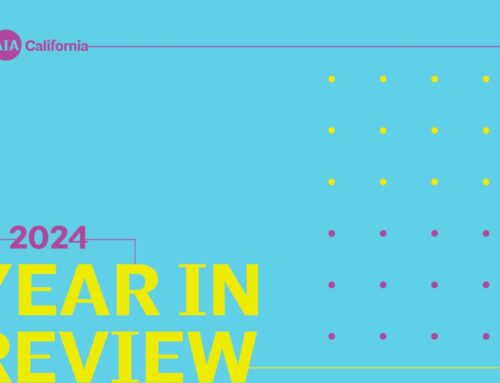Bill Positions //byline Scott Terrell, Director of Government Relations October 22, 2024 How did bills that AIA California took positions on in 2024 fare? Here’s a wrap-up. First, a word about the process. How does AIA California reach official positions on these bills: Every year, the AIA California Board of Directors positions on legislation impacting the architecture profession, evaluating bills for both their positive and negative effects. The 2024 legislative session was particularly busy, with 2,124 new bills introduced—1,505 in the Assembly and 619 in the Senate. AIA California staff reviewed all the bills and identified several hundred relevant to the architecture profession, which were assigned to subcommittees for Climate Action, Housing, and Advocacy. Together, about 40 AIA California members from these subcommittees reviewed the legislation and provided recommendations to the Board. California’s legislative session adjourned on August 31, 2024, and Governor Newsom had until September 30 to take action on the bills. Out of the 1,206 bills that reached his desk, the Governor signed 1,017 and vetoed 189, resulting in a 16% veto rate. The legislative environment was marked by concerns about the state’s budget deficit, which is projected at approximately $47 billion. Despite these challenges, California continued to cautiously lead on issues like climate change and housing, key priorities also shared by AIA California. The final results on all of our bill positions can be found here. Below are some highlights: Successes: Signed Bill HighlightsIn 2024, AIA California supported several key bills that were signed into law by Governor Newsom. Among those: AB 3057 (Wilson) simplifies the creation of junior accessory dwelling units (JADUs) by exempting them from certain environmental review processes under the California Environmental Quality Act (CEQA), speeding up housing development in single-family zones. SB 1207 (Dahle) revises the Buy Clean California Act by updating the list of eligible construction materials to include more environmentally friendly insulation options, promoting sustainable public building practices. AB 1957 (Wilson) extends a pilot program allowing counties to use “best value” criteria—considering factors like design quality rather than just cost—when awarding public construction contracts. These legislative wins enhance opportunities for architects to contribute to housing solutions, sustainable design, and high-quality public projects. Disappointments: Important Bills That Did Not Move ForwardSeveral key bills that AIA California supported in 2024 did not advance, but they represent crucial opportunities for the architectural profession and will hopefully be revisited in future legislative sessions. Among those: AB 2934 (Ward) sought to establish a working group to review California’s building standards, aiming to improve the efficiency of housing construction by considering an expansion of the types of projects that can utilize California’s Residential Building Code. This bill would have allowed architects to play a pivotal role in updating building codes to better meet modern residential needs and streamline processes. SB 1227 (Wiener) focused on creating a CEQA exemption for projects in San Francisco’s downtown revitalization zone, which would have expedited urban renewal and redevelopment efforts. This bill represented a missed opportunity to simplify regulatory hurdles and drive forward revitalization in one of California’s most important urban centers. AIA California believed this bill could have been used as a model for other jurisdictions in the future. AIA California remains optimistic that these bills will be revisited in upcoming legislative sessions to support efficient, high-quality design and development. Vetoed Bills and Their ImpactTwo key bills supported by AIA California in 2024 were ultimately vetoed by Governor Newsom, but they remain highly relevant to the architectural profession, and AIA California hopes they will be revisited in future sessions. AB 3068 (Haney) sought to streamline the approval process for adaptive reuse projects, which convert nonresidential buildings into residential or mixed-use structures, and provided incentives to developers as part of California’s housing solution. AB 2513 (Pellerin), which would have required warning labels on gas stoves to inform consumers about potential air pollutants, aligns with architects’ increasing focus on designing healthy and sustainable residential spaces. While the veto delays these efforts, both bills represent important pathways for advancing California’s architectural and environmental priorities, and AIA California remains hopeful they will return to the legislative agenda. Looking AheadAIA California will continue to advocate for legislation that promotes high-quality design, sustainability, and affordable housing solutions while hoping for future opportunities to revisit bills that did not pass this year. The efforts of AIA California’s Board of Directors, subcommittees, and advocacy teams demonstrate the organization’s commitment to shaping a built environment that reflects the highest standards of safety, sustainability, and design excellence.
AIA CaliforniaRead More






